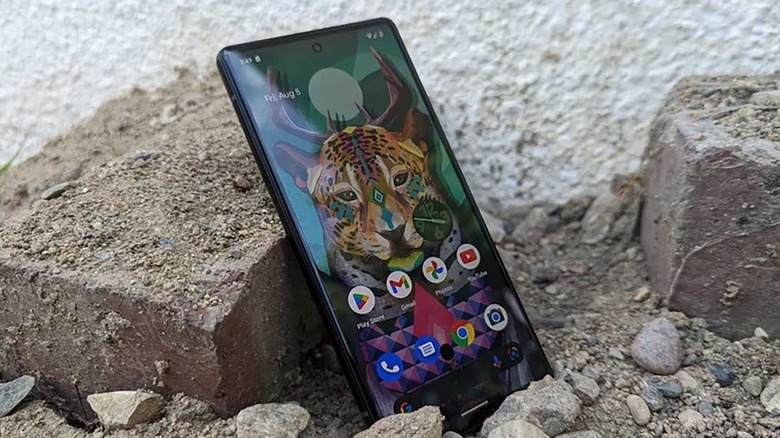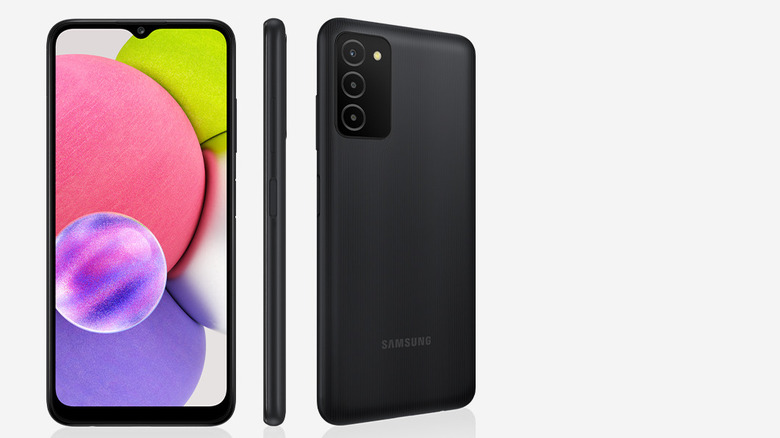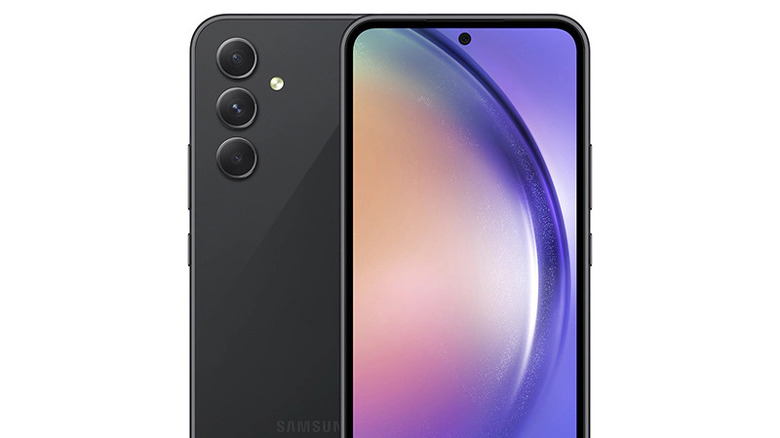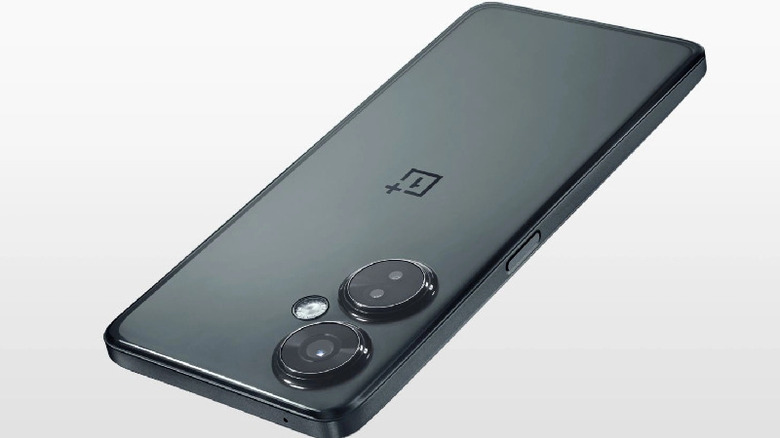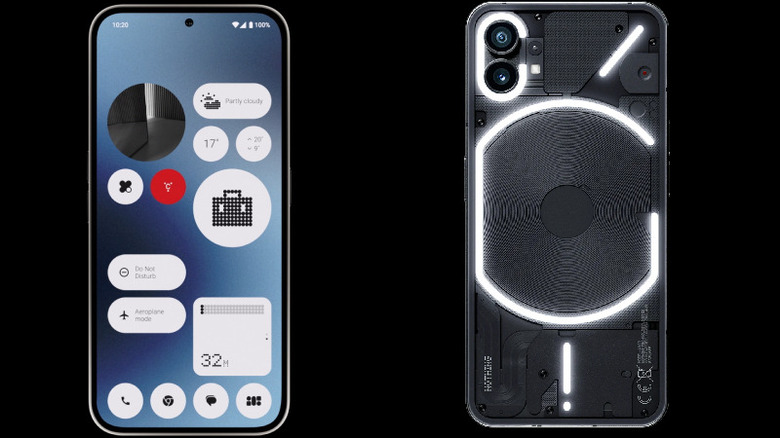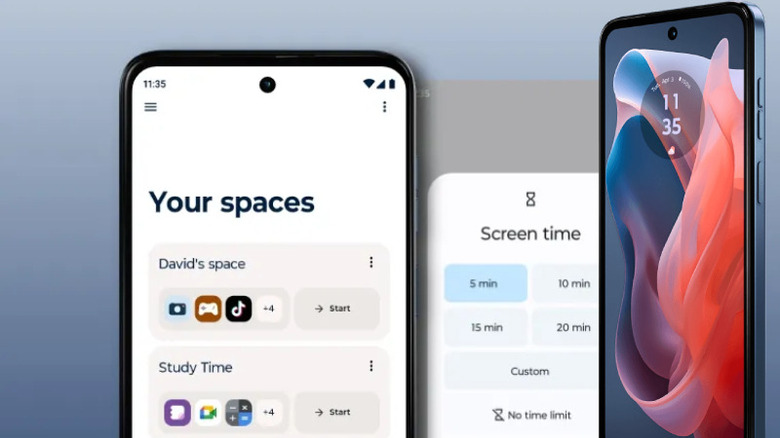6 Affordable Android Phones Worth Checking Out In 2024
We may receive a commission on purchases made from links.
Smartphones are a necessity these days, but not everyone has the disposable income for flagship phones that cost between $800 and $1,000. With every new Samsung Galaxy iteration, consumers feel like they need to sell a kidney. Luckily, there are smartphones that don't cost an arm and a leg worth buying when you're on a budget.
Even if one has the budget for a Samsung Galaxy S24 Ultra or another premium Android phone, one might be a practical person who favors cost-effectiveness over novel features. A 120Hz refresh rate isn't important to those who don't stream Netflix from their phone, just as 256GB of internal storage isn't necessary for someone who favors storing files in the cloud or on their computer.
It's easy to miss these lower-cost hand devices since they don't always contain the same glamorous hardware as big-name phones and don't receive the same level of marketing. However, basic Android phones can reach a wider audience than flagship phones. To help with purchasing decisions, we specifically researched phones that didn't exceed the price point of $400 while also not sacrificing performance (more on our methodology later.) With that said, here are six affordable Android phones worth checking out in 2024.
Google Pixel 6A
There's nothing better than finding a smartphone with a comparatively low price tag that delivers the performance of a flagship phone. According to SlashGear's review, the Google Pixel 6A accomplishes exactly that. Sure, it's an older phone, but its performance is nothing to scoff at. It came with the same Tensor chipset as its Pixel 6 counterpart.
The Google Pixel 6A sports a 6.1-inch OLED display with a 60Hz refresh rate. While that's considerably more compact than the 6.7-inch display on the newer Pixel 8 Pro, it easily fits in your hand without struggle. The phone's 12.2-megapixel primary camera snaps surprisingly clean shots. It also comes with a 12-megapixel ultrawide-angle lens with a 114-degree field of view. Despite lacking the same sensors as its more expensive siblings, it delivers equally beautiful shots by utilizing the same software that cleans up each photo.
The Pixel 6A has 128 GB of internal storage and 6GB of RAM. There's no option for expandable storage, but there's always Google Drive if the storage space feels too restrictive. It can survive in 1 meter of water for up to 30 minutes and connect to most 5G networks in the U.S. However, it doesn't work with CDMA bands or mmWave 5G. All in all, it's a good phone for $199 from Amazon.
Samsung Galaxy A03S
The Galaxy name alone is worth its cost. Samsung has been delivering some of the best phones on the market, but it hasn't forgotten those on a budget. Returning as an affordable Android worth checking out from 2023, the Galaxy A03S is a bare-bones, get-the-job-done kind of phone. Anyone who doesn't need all the fancy bells and whistles should consider it.
For $160, this is a great entry-level phone for high school students or anyone who wants to join the Samsung ecosystem. Despite not having all the more advanced features of a flagship phone, the Galaxy A03S has a fingerprint reader, dual-SIM support, and 15W wired charging speeds. It only comes with 3GB of RAM, but it's enough for simple tasks like checking email and reading the news.
If you take a lot of pictures or save videos on your phone, the measly 32GB internal storage will fill up fast. Luckily, it comes with a card slot that supports up to 1TB of storage on a microSD. The Galaxy A03S falls short in the camera department. Its three-camera setup includes the main 13-megapixel lens and dual 2-megapixel cameras. However, it's enough for anyone sending pictures back and forth between friends.
Samsung Galaxy A54
Samsung's Galaxy A-series phones have become capable midrange phones that consumers can depend on. They might not be as esteemed as the Galaxy S24 Ultra, but their functionality comes close in comparison. Even the design resembles the Galaxy S23. The Galaxy A54 has a 6.4-inch Super AMOLED 1080p (1080 x 2340) display with a 120Hz refresh rate, which gives users a smooth viewing experience.
Although it offers only 128GB of internal storage, the A54 has a card slot for expandable storage that supports microSD cards with up to 1 TB. Its camera setup is pretty spectacular for a midrange hand device. It sports an OIS-enabled 50-megapixel f/1.8 main lens, a 12-megapixel f/2.2 ultrawide lens, and a 5-megapixel f/2.4 macro lens. It also comes with a 32-megapixel f/2.2 front-facing selfie lens.
However, if you're looking for a device that supports wireless charging, the Galaxy A54 isn't the phone for you. It's limited to 25W wired charging, which can take a couple of hours before it's fully charged. Samsung's website sells the A54 for $450, but it's $100 cheaper if you go through Amazon.
OnePlus Nord N30 5G
One wouldn't expect a phone under $300 to have specs like 8GB of RAM, a 120Hz refresh rate, a 16-megapixel front-facing camera, and a 108-megapixel main primary camera. The OnePlus Nord N30 5G offers all of that and more. However, there are a few drawbacks.
Firstly, the biometric scanner isn't even comparable to other flagship devices. It's on the power button, giving users less surface area to work with, which makes fingerprint placement difficult. Secondly, the cameras aren't as stellar as OnePlus would have users believe. The 108-megapixel primary camera is great, but it only snaps decent shots if the lighting is ideal. In low-light conditions, even with "night mode" activated, the photos aren't worth sharing.
Now, the good. The OnePlus Nord N30 5G sports a headphone jack, a feature long since abandoned in flagship phones. Between its 8GB of RAM and Snapdragon 695 5G Chipset, there isn't a task or app in the Google Play Store this phone can't handle. It's a testament to the capabilities of midrange phones, proving that not every upgrade needs to be one of the flagship Androids.
Nothing Phone 2A
The Nothing Company delivered a reasonably priced midrange phone with some character. The most notable feature of Nothing's line of phones is the transparent backplate, which reveals some internal components, including the NFC coil. When shopping on a budget, it's nice to find something that stands out from the rest of the crowd, which the Nothing Phone 2A accomplishes.
It's more than intriguing to look at, though. The Nothing Phone 2A comes with a 6.7-inch Flexible AMOLED display with a variable refresh rate between 30Hz and 120Hz. The battery life will keep you in business for roughly two days before requiring a charge. It features a main camera with 50-megapixels along with a 50-megapixel ultrawide lens that captures 114-degree field of view.
While the Nothing Phone 2A only runs $350, the caveat is that it's only available for consumers in the United States as part of Nothing's developer program. Otherwise, it's only available in Europe. Furthermore, it can only utilize T-Mobile's 5G network and AT&T's 4G LTE. It can't access Verizon's network at all.
Motorola Moto G Play (2024)
Motorola has been in the mobile phone business for decades, producing one of the most prolific cell phones back in the day: the Razer. It's only natural that the company would know how to manufacture a midrange phone that won't break the bank. The Moto G Play phone is perfect for anyone who wants a phone to simply function as a phone or as an entry-level device for young children.
The only people this phone isn't great for are gamers. If your primary function on a phone is gaming, you're going to experience some stuttering and lag with the Moto G Play due to its outdated Snapdragon 680. However, this phone performs essential tasks just fine. Its 64GB internal storage is especially low for a phone in 2024, but users can expand it to 1TB with a microSD card.
Its 5,000mAh battery can last a couple of days between charges, of which it receives 15W via USB-C. The Moto G Play's 50-megapixel camera will snap some decent shots that are social media worthy but nothing breathtaking that you could submit for professional publication. According to our review of Motorola's Moto G Play (2024) shows that it "even gives more expensive devices like the Moto G Stylus a run for its money." Not to mention, at only $129.99, it's hard to go wrong.
How we chose these affordable Android phones
There were a few points of research that were important for a phone's inclusion. The first criterion for an Android in this article was its performance. It had to be able to run very basic apps with minimal stuttering and lag. Phones with 6GB of RAM were a priority, as that much RAM would allow users to multitask with relative ease. However, we chose a few with less than 6GB of RAM to accommodate those who don't require multitasking capabilities.
Additionally, we chose Androids that our staff personally used, who objectively reviewed each device. Lastly, no phone could exceed a $400 price tag. Anything above that is getting into flagship phone territory. On the flip side, we didn't want to include anything below $150 because, at that point, you're sacrificing a phone's performance. Only one Android falls under that price point, and that was based on one of our knowledgeable author's reviews.

